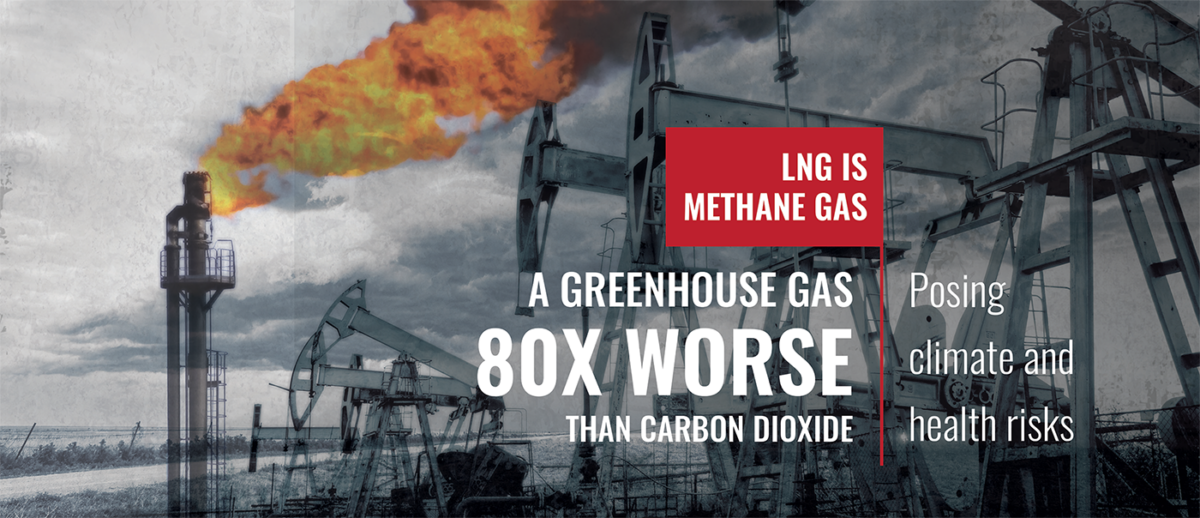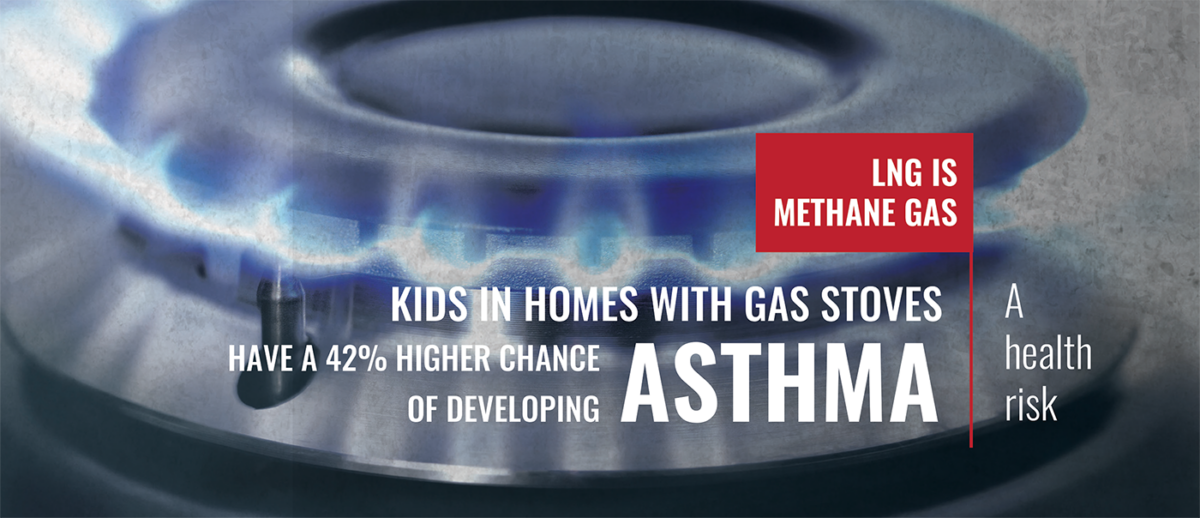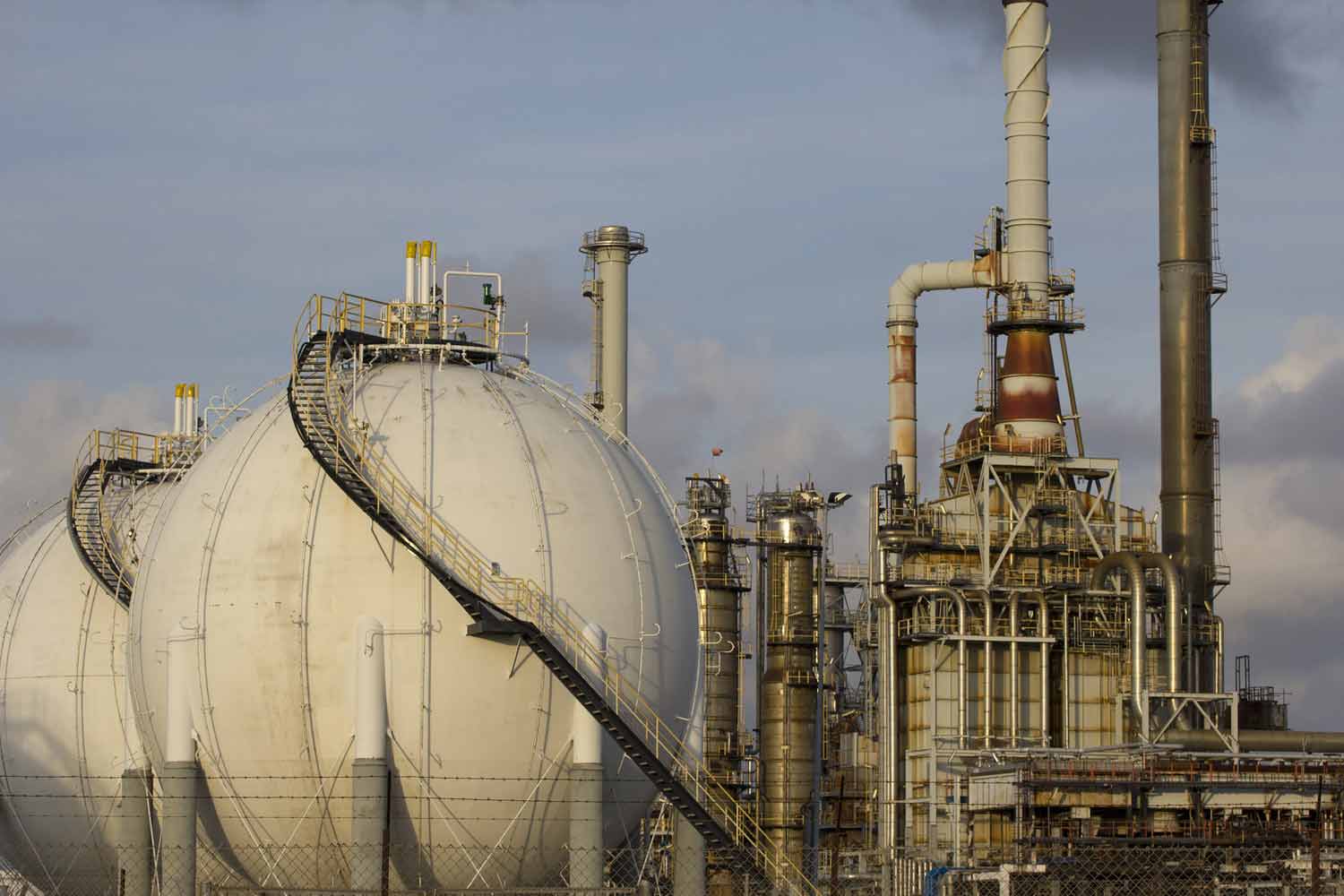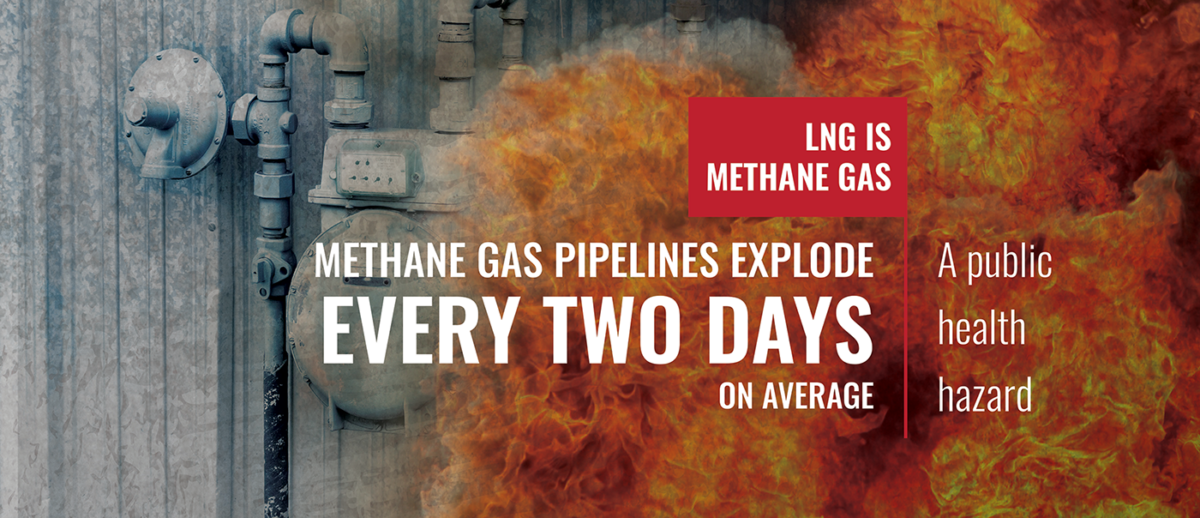A decade ago, Rainforest Action Network coined the term “Conflict Palm Oil.” It was a part of a concerted effort to rebrand the most widely used vegetable oil in the world as a driving force behind deforestation and human rights abuses. And it worked. Our campaign dramatically shifted the public understanding and global narrative of the palm oil industry — and how the production of this commodity was driving massive destruction of rainforests and human rights abuses such as human trafficking and child labor.
Now we’ve turned our attention — and our narrative shifting strategy — to a massive threat to our sustainable future: so called “natural gas.”
There is nothing natural about Liquified “Natural” Gas (LNG), or methane gas. It is a fossil fuel 80 times more dangerous than carbon. Yet LNG is slated for the largest fossil fuel build out of this generation. In the U.S. Gulf Coast alone, there are over twenty new LNG export facilities planned. According to the International Energy Association, we must stop expanding the fossil fuel sector if we are to avoid the most catastrophic impacts of climate change. Yet if these LNG projects are built, it would lock us into decades of dependence on fossil fuels.

The rebranding of methane into “natural” gas has been intentionally, and successfully, done by the fossil fuel industry. It is greenwashing at its most blatant.
LNG Myths
- It is natural and safe.
- It is better for the environment than coal or oil.
- It is a viable energy alternative — or “bridge fuel” — to transition to cleaner energy sources
- Because of Russia’s invasion of Ukraine, more LNG is needed to help the global energy market.
LNG Facts
- The proposed LNG build outs in the Gulf Coast are displacing primarily Black and Brown communities without their consent — including projects on Indigenous ancestral territories.
- LNG is made up of mostly methane, a gas that has 80 times more warming power than carbon dioxide over a 20 year period
- Gas accounts for almost half of methane emissions in the U.S.
- LNG pipelines explode on average every two days in the U.S.
- In addition to the toxic methane gas in LNG, the manufacturing, storing and exporting of LNG accounts for over one-third of carbon emissions in the U.S.
- Big banks and fossil fuel companies are making a lot of money on the planned LNG expansion
Simply put, LNG is becoming the largest fossil fuel obstacle to reducing emissions by 2025. And LNG is becoming one of the biggest threats to the safety of frontline communities.

We need a just transition to a people centered economy with cleaner energy sources. That’s why we are calling out LNG for what it is: dirty, fracked, methane gas posing a massive threat to climate stability.
So this fall during Climate Week, we took to the streets in New York City to get the message out. We covered street corners, taxi cabs, and subways with advertisements telling the truth, and rupturing the false narratives on gas. These ads were seen an estimated 12 million times during the month of September.
It is imperative that the public is aware of the truth: there is nothing “natural” about methane.


